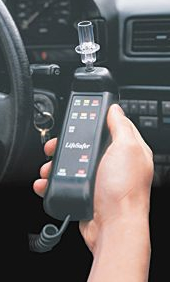 How frustrating would it be if your car won’t start because you recently used mouthwash, put on cologne, or ate a cinnamon roll? That frustration could be real if the federal government ultimately requires alcohol sensors in cars. According to the Columbus Dispatch, federal officials recently announced plans to implement a technological advancement in alcohol-detecting sensors for vehicles. The government anticipates the new alcohol sensors could significantly reduce drunk driving. The sensors may also increase headaches for non-drinking drivers.
How frustrating would it be if your car won’t start because you recently used mouthwash, put on cologne, or ate a cinnamon roll? That frustration could be real if the federal government ultimately requires alcohol sensors in cars. According to the Columbus Dispatch, federal officials recently announced plans to implement a technological advancement in alcohol-detecting sensors for vehicles. The government anticipates the new alcohol sensors could significantly reduce drunk driving. The sensors may also increase headaches for non-drinking drivers.
There are two ways alcohol sensors could be used in vehicles. First, a vehicle could be equipped with passive breath sensors to detect alcohol in the air inside the car. If the concentration of alcohol in the vehicle’s interior air exceeds a predetermined limit, the vehicle would not start.
Passive breath sensors may suffer from the same problem associated with ignition interlock devices. Those devices require the driver to blow into a tube with alcohol-free breath before the vehicle will start. The problem with interlock devices is false positives: the device prevents the vehicle from starting when the driver consumed no alcohol. Causes of false positives include mouthwash, toothpaste, bread, pastries, spicy foods, and high-protein diets.
The second way in which alcohol sensors could be used in vehicles is touch-sensitive contact points. Those contact points could be located on the vehicle’s controls, like the gearshift or starter button, and would detect alcohol on the driver’s skin. If the alcohol level exceeds a preset limit, the vehicle would not start.
Touch sensors may also have problems with false positives. Courts already use devices which measure alcohol levels on the surface of the skin. Those SCRAM devices (Secure Continuous Remote Alcohol Monitoring) have a reputation for reporting a “drinking event” based on the presence of alcohol in commonly-used substances such as lotion, perfume, cologne, and cleaners.
The National Highway Traffic Safety Administration (NHTSA) does not seem to be concerned about the problems of false positives. Administrator Mark Rosekind said, “The message today is not ‘can we do this?’ but ‘how soon can we do this?’” Rosekind said he will push to get the sensors field-tested and put into use before the five-to-eight years anticipated by researchers.
NHTSA is so focused on the new alcohol sensors because, according to the Dispatch article, Mark Rosekind is “eager to introduce an advance that would rival seat belts or air bags in saving lives.” Making roads safer by reducing drunk driving is a worthy goal. It is questionable, however, whether this country should focus our resources on developments which may cause inconvenience to millions of drivers. At the same time, we permit drivers to use complex navigation systems and cell phones while driving. Hopefully, before we get to the point of mandating vehicular alcohol sensors, NHTSA will take closer look at potential problems with the technology and take a broader view of the big picture of driving safety.
 Columbus OVI/DUI Attorney Blog
Columbus OVI/DUI Attorney Blog

